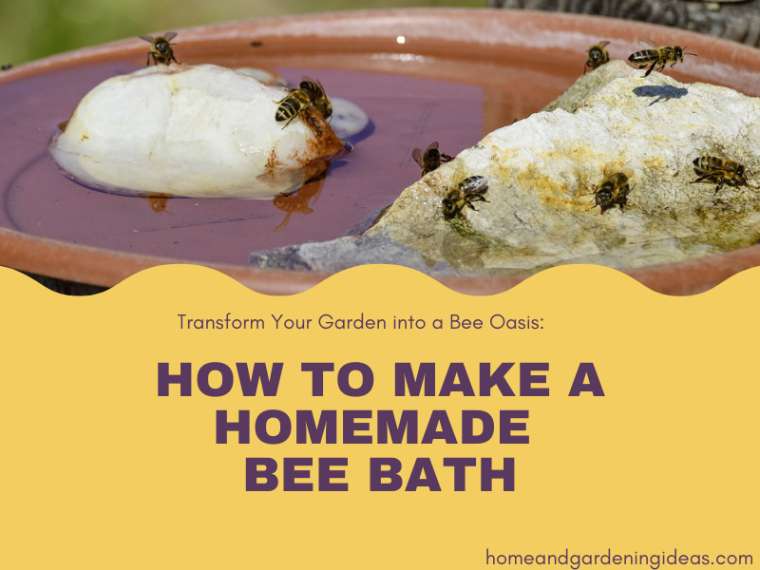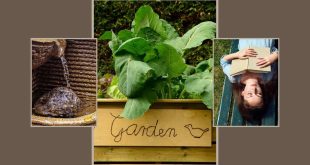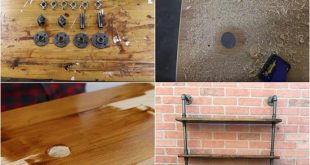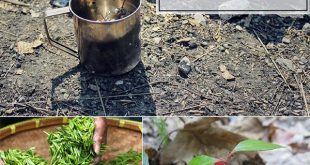How to Make a Homemade Bee Bath
If you’re looking for a simple and effective way to support local bee populations, consider adding a homemade bee bath to your garden. Bee baths are easy to make, require only a few materials, and can provide essential water resources for thirsty bees. In this article, we’ll discuss why bee baths are important, how to make one, and how to care for it.
Why Bee Baths are Important
Bees, like all living creatures, need water to survive. However, finding water can be a challenge, especially during periods of drought or in urban environments where water sources may be scarce. Bee baths can provide a reliable source of water for bees, allowing them to stay hydrated and healthy.
But bee baths aren’t just important for individual bees – they can also help support entire bee populations. Bees play a crucial role in pollinating crops and wildflowers, but their populations have been declining in recent years due to habitat loss, pesticide use, and other factors. By providing a water source, you can help attract and support bees in your local area, which can have positive impacts on the environment and food systems.
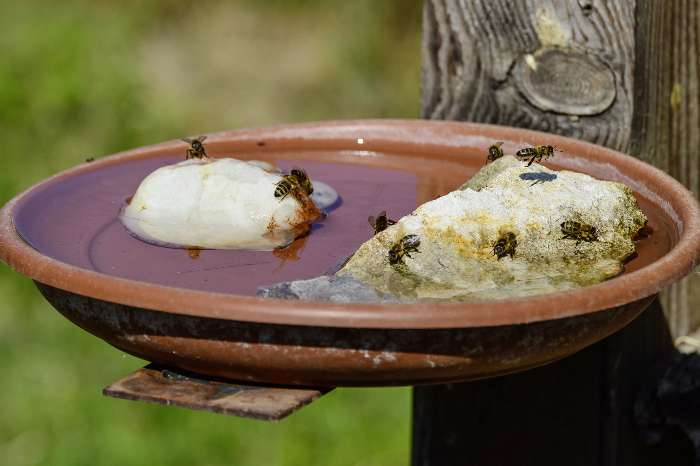
How to Make a Bee Bath
Making a bee bath is simple and doesn’t require any special equipment. Here’s what you’ll need:
- A shallow dish or bowl
- Rocks or stones
- Water
Extra tips
To make your bee bath, fill your dish or bowl with clean water. Choose a shallow dish that is no more than two inches deep, as bees can drown in deeper water. Next, add some rocks or stones to the dish. These will provide a landing surface for the bees, as well as a place for them to perch while they drink.
1, Place your bee bath in a sunny spot in your garden, away from any potential hazards like pesticides or herbicides. You may also want to add some flowering plants nearby to attract bees to the area.
2, Choose a variety of stones: Bees come in different sizes, so it’s a good idea to use a variety of rocks and stones in your bee bath. This will provide different surfaces for the bees to perch on, making it easier for them to drink.
3, Avoid adding soap or sugar to the water: While it may be tempting to add soap or sugar to the water to make it more appealing to the bees, this can actually be harmful to them. Soap can strip bees of their natural oils and sugars can attract other insects that may harm the bees.
4,Use a drip system: In addition to a bee bath, you can also consider adding a drip system to your garden. This involves setting up a small fountain or dripper that continuously provides a source of clean water. This can be especially helpful during hot summer months when bees may struggle to find water.
5, Consider the placement of your bee bath: While it’s important to place your bee bath in a sunny spot, you may also want to consider its proximity to your plants. Placing the bee bath near your plants can help attract bees to your garden, which can increase pollination and help your plants thrive.
6, Encourage your neighbors to make bee baths: The more bee-friendly habitats there are in your community, the better it is for bees. Consider encouraging your neighbors to make their own bee baths or even organize a community bee bath project.
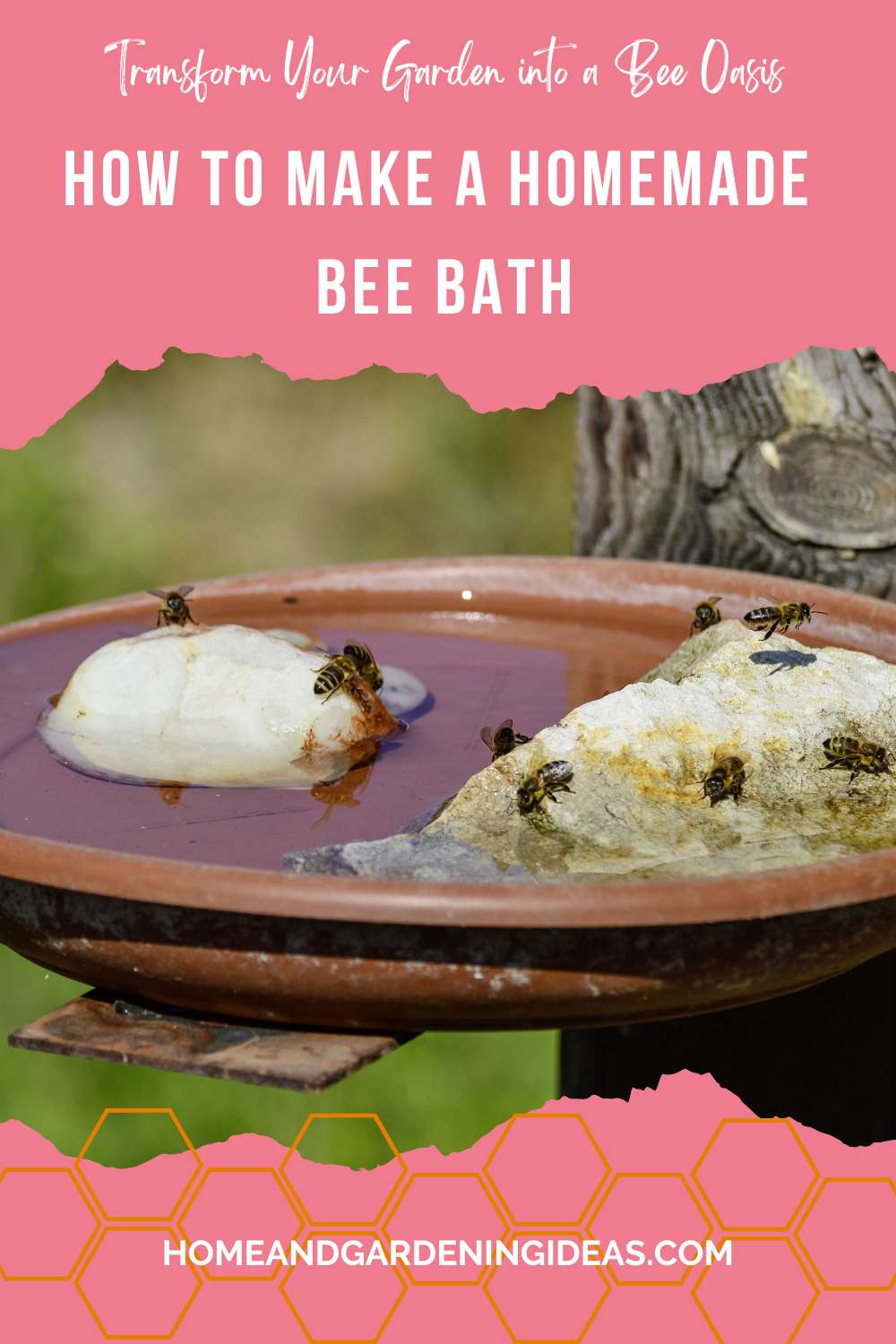
Caring for Your Bee Bath
Bee baths require minimal maintenance, but there are a few things you can do to keep them clean and healthy for the bees. Here are some tips:
- Change the water regularly – Depending on how quickly your bee bath gets dirty or contaminated, you may need to change the water every day or every few days.
- Clean the dish – If you notice any buildup or debris in the dish, clean it out with soap and water to prevent mold or bacteria from growing.
- Use clean water – Bees are sensitive to chemicals and pollutants, so make sure the water you use is free from contaminants.
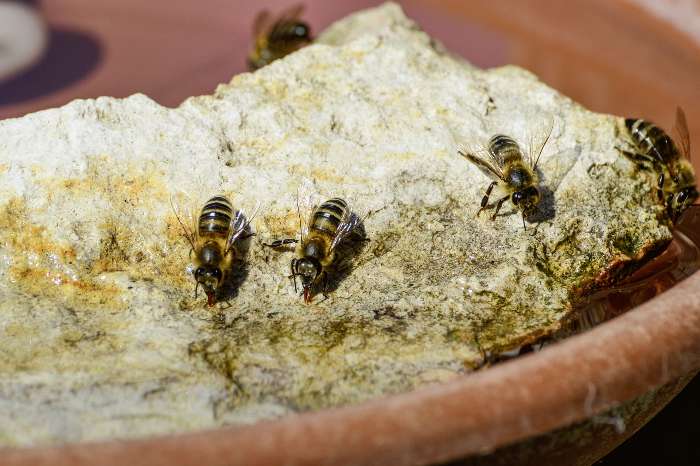
Conclusion
Adding a bee bath to your garden is a simple and effective way to support local bee populations. By providing a reliable source of water, you can help bees stay hydrated and healthy, which can have positive impacts on the environment and food systems. With just a few materials and minimal maintenance, you can create a safe and inviting space for bees to drink and thrive.
 Home and Gardening Ideas At home and Gardening ideas we believe inspiring readers about homesteading, self sufficiency
Home and Gardening Ideas At home and Gardening ideas we believe inspiring readers about homesteading, self sufficiency
